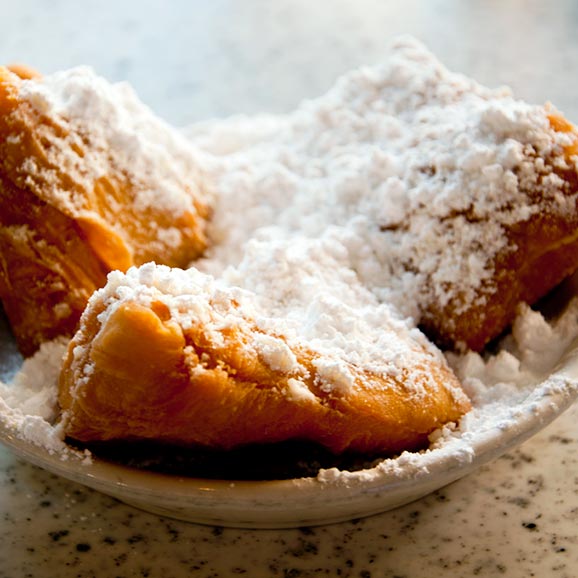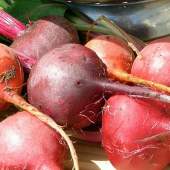Mardi Gras

The thousands of revelers who take part in Mardi Gras celebrations no doubt enjoy many of the traditional Creole and Cajun dishes that go with it, either as diners in some of New Orleans’s justly famous eateries, or here in Chicago. To those of us who are not native to Louisiana, Creole and Cajun foods are often lumped together as they share a number of commonalities. But how do these two cuisines differ? How and where did they originate?
Creole food is a product of (no surprise) the Creoles of French Colonial New Orleans — descendants of upper-class French and Spanish aristocracy. There are French Creoles (natives of the area of European descent) and Louisiana Creoles (whose ancestors were of mixed race). Their cuisine incorporates elements from many disparate cultures, and recipes can be complicated, such as a remoulade sauce that combines almost a dozen different ingredients. Dishes can include tomatoes, green onions, bay leaf, parsley, and dried cayenne pepper. In general, Creole cuisine is considered to be a more sophisticated, high-brow style of “city food” in contrast to…
Cajun cuisine, which generally has a more rustic, “country” feel — simpler in execution and incorporating fewer and less exotic ingredients. The name “Cajun” refers to the original settlers who emigrated from Canada’s Acadia Region (the area that now encompasses Nova Scotia, New Brunswick, and Prince Edward Island) after the British invaded in the mid-1700s. As you can imagine, the original Cajuns had to adjust to a vastly different climate, and accordingly, their culinary practices underwent a major sea change as well. Most Cajun repasts are considered to be “three-pot meals” — one pot for the main dish, the second pot for the sausages, seafood, or rice, and the third for whatever vegetable might be most readily available at a given time.
It all boils down to this, as they say at Blue Island’s Maple Tree Inn: “Cajun is food that you eat in the kitchen, and Creole is food that you eat in the dining room.” Whichever style you favor (and both are delicious), here are some quintessential dishes we associate with New Orleans and Mardi Gras:
-
Jambalaya: This is a popular meat, vegetable, and rice dish of Provençal and Spanish origin. The meat can vary, but almost always includes a smoked, spiced sausage such as Andouille along with another meat (pork, chicken, or seafood). You will often hear about a “holy trinity” of vegetables used in Cajun cooking — green bell pepper, onion, and celery — and these are included here, with the addition of carrots, tomatoes, and sometimes, chilis and garlic. All of this is blended together and combined with broth and rice.
Jambalaya - Gumbo: This hearty stew with elements derived from a wide variety of cultures — including French, African, Spanish, German, and Choctaw — is composed of shellfish, stock, ground sassafras leaves, the aforementioned vegetable “holy trinity” (see above) plus okra, and thickened with a roux of duck fat or lard and flour. Other meats are sometimes added, and it is customarily served over rice. This mixture has to simmer for several hours, so make sure you have something to tide you over in the meantime!
- Dirty Rice: Essentially, this is white rice that takes on a “dirty” hue by cooking it with cayenne and black pepper, chicken livers, and the vegetable “holy trinity.” If you want this to serve as more than a side dish, add some red beans, Andouille sausage and/or collard greens, and you have yourself a meal.
-
Po’ Boy: Every culture seems to have its signature sandwich, and this is Louisiana’s. There are numerous different kinds (including a “sloppy roast beef” reminiscent of a Chicago Italian beef sandwich), and several stories about how it got its name — one of which is that a pair of New Orleans restaurateurs, onetime streetcar conductors, created the sandwich to feed their former coworkers — whom they called “poor boys” — during a 1929 transit strike. These can be served cold or hot on the New Orleans version of a baguette, and include catfish, oysters, fried chicken, shrimp, sausage, or gravy.
Roast beef and shrimp po' boy - King Cake: You’ll recognize a King Cake immediately due to its vivid decoration: “sugars in the royal colors of purple (justice), green (faith), and gold (power) honor the three kings who visited the Christ child on…the 12th day after Christmas,” according to Southern Living. The cake itself is generally a pretty standard vanilla with cinnamon, but embedded in it is a very special token: either a fava bean or a tiny plastic baby. Whoever is served the piece containing the token, it is said, will enjoy good fortune in the coming year.
- Beignet (pronounced ben-YAY): This name comes from the Celtic bigne, which means “to raise,” and from the French (“fritter”); an apt moniker, as these are small, raised “doughnuts” that are deep-fried and rolled in powdered sugar, or glazed. They have been in existence since at least the 16th century. There are plenty of places in the area to find them; or you can make your own.
At this festive time of year, Creole and Cajun dining is best summed up in a popular New Orleans saying at Mardi Gras: “Laissez les bon temps rouler,” or “Let the good times roll!”





